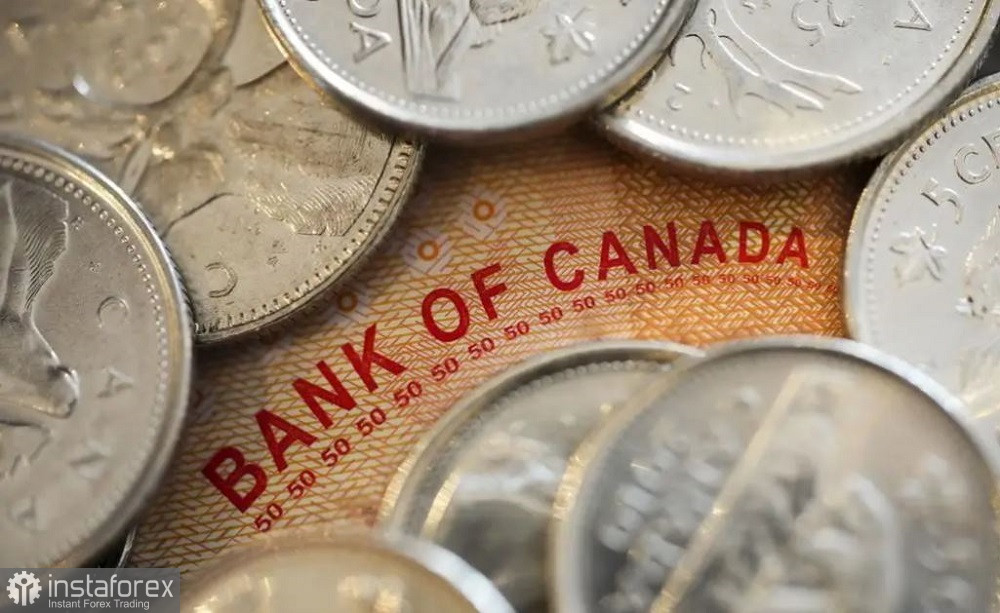The Canadian dollar has weakened against the US dollar for the second consecutive week. After a prolonged five-week decline, the USD/CAD pair has actively reversed direction and gained momentum. This price movement is driven not so much by the greenback's strength (especially since the US Dollar Index has shown mixed dynamics recently) but by the loonie's weakness.

Ironically, the pair declined and then rose for the same reason: inflation. Canada released a surprisingly strong Consumer Price Index report at the end of June. Instead of the expected decrease to 2.6%, the Consumer Price Index rose to 2.9% year-over-year in May. The core index also came in "green," rising to 1.8% compared to a forecasted decline of 1.5% year-over-year. In response to this report, the USD/CAD pair dropped, falling from 1.3790 to 1.3585 over five weeks.
However, last week, an inflation report for June was published. It revealed that the overall CPI fell into negative territory (-0.1%) for the first time since December 2023, despite most experts expecting an increase to 0.2%. In annual terms, there was also a downward trend: the indicator decreased to 2.7% after rising to 2.9%. The core CPI also fell into negative territory on a monthly basis (for the first time since December 2023). However, in annual terms, the indicator was in the "green" (rising to 1.9% compared to a forecasted decline of 1.6%). The pair returned to the 37 area after this report.
Traders view the above figures through the lens of the Bank of Canada's July meeting, the results of which will be announced on July 24. According to forecasts from several experts, the central bank is expected to keep all monetary policy parameters unchanged, following a 25 basis point rate cut in June (to 4.75%). However, only some agree with this forecast. For instance, ING currency strategists anticipate a rate cut this month, pointing to the current situation in Canada's labor market. According to them, the central bank may resort to further easing amid declining hiring and rising unemployment (to 6.4%). Notably, unemployment has risen to its highest level since January 2022.
The June inflation report also tips the balance in favor of a dovish scenario.
It is worth noting that following the previous meeting, Bank of Canada Governor Tiff Macklem did not rule out additional measures in this direction "in the foreseeable future." He also warned that any rate cuts would be "gradual," with each subsequent decision dependent on economic data that the central bank's members will receive ahead of the meeting. In one of his subsequent interviews, Macklem mentioned that it is "reasonable" to expect further rate cuts "if the economy and inflation develop according to the central bank's expectations."
Can we say that the "appropriate conditions" are now in place? More likely no than yes. On the one hand, unemployment in Canada has surged to a 2.5-year high, but on the other hand, the rate of growth in average hourly wages has accelerated to 5.4% in annual terms, up from 5.1% the previous month. Inflation also presents a mixed picture: while the overall CPI has slowed, the core index has accelerated in annual terms (with growth recorded for the second consecutive month).
In my opinion, the Bank of Canada will likely adopt a wait-and-see approach following the July meeting, in anticipation of a cooling labor market (wage growth) and a slowdown in core inflation, to assess by September whether it can continue to lower interest rates or not.
It can be assumed that such a "wait-and-see" outcome from the July meeting may help USD/CAD sellers organize a bearish corrective pullback in price. However, note that the Canadian dollar's weakness is also due to falling oil prices. Specifically, a barrel of WTI crude oil traded around $80-82 last week, whereas now the price has dropped to $78. This downward trend has been intact since July 19.
Therefore, I believe the Bank of Canada will maintain the status quo following the July meeting but will likely adopt dovish rhetoric, hinting at a possible rate cut in September. The realization of such a scenario could trigger a corrective pullback in USD/CAD, which would be prudent to use for opening long positions.
Technical analysis also suggests opting for long positions. On all higher timeframes (from H4 and above), the pair is either at the upper line or between the middle and upper lines of the Bollinger Bands indicator. The Ichimoku indicator shows a bullish "Parade of Lines" signal on the daily chart. The primary target for the upward movement is the 1.3800 mark – the upper line of the Bollinger Bands on the weekly timeframe.
 English
English 
 Русский
Русский Bahasa Indonesia
Bahasa Indonesia Bahasa Malay
Bahasa Malay ไทย
ไทย Español
Español Deutsch
Deutsch Български
Български Français
Français Tiếng Việt
Tiếng Việt 中文
中文 বাংলা
বাংলা हिन्दी
हिन्दी Čeština
Čeština Українська
Українська Română
Română

